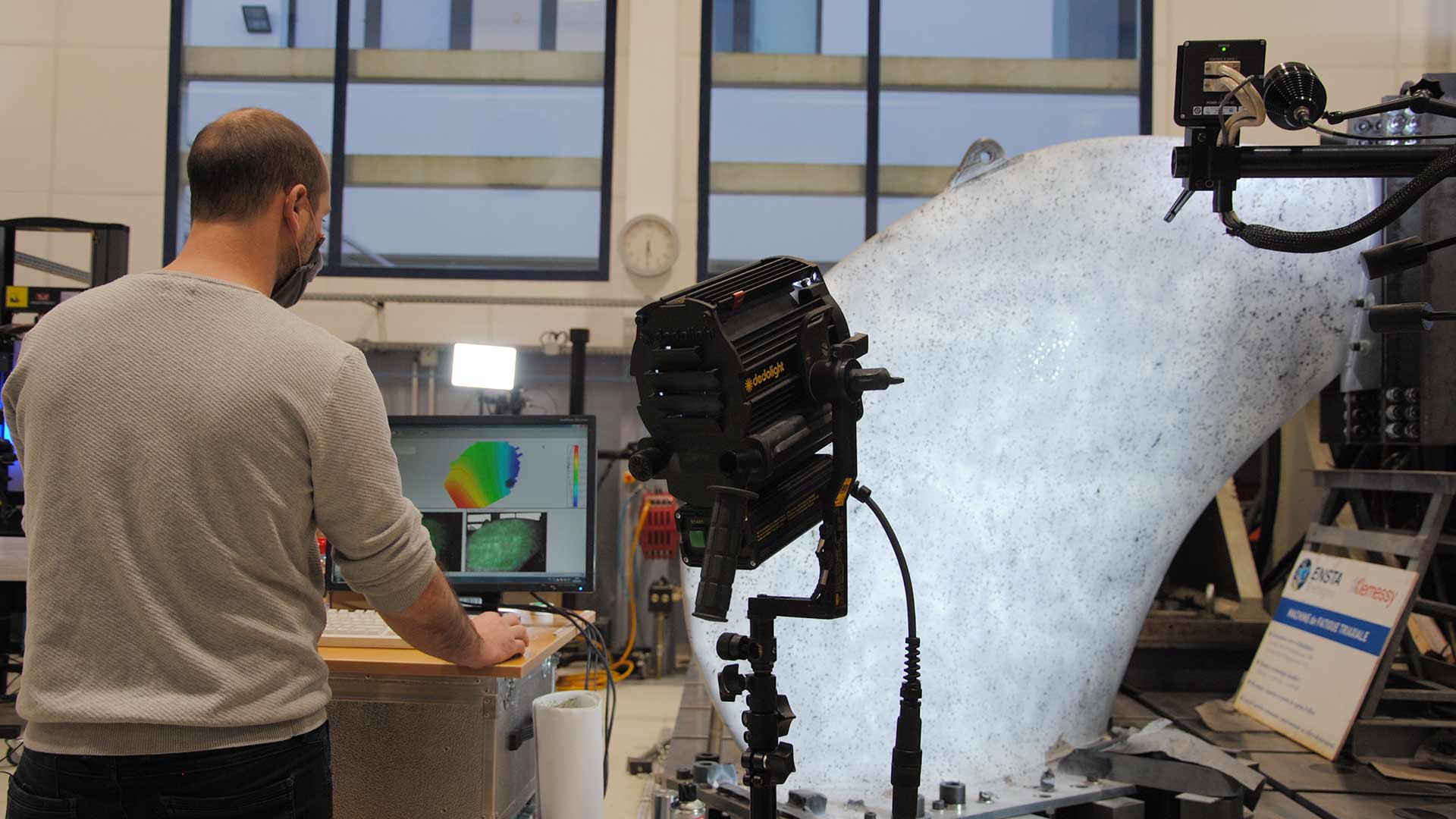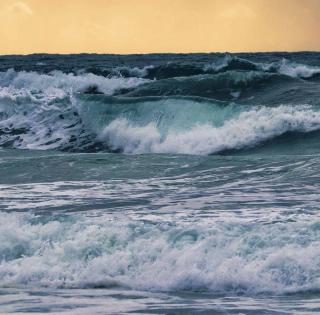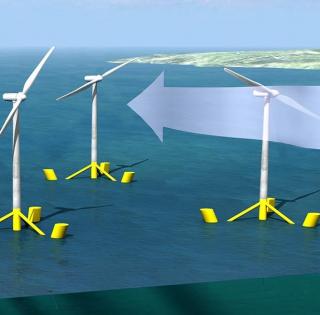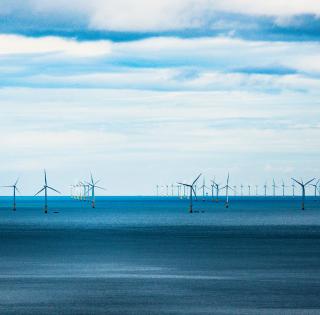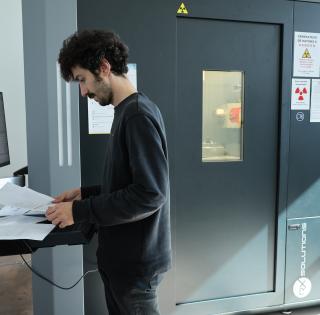
European H2020 RAMSSES research project
The European RAMSSES project aims to improve the service life of ships and European naval structures, while reducing their environmental footprint. This involves the development and integration of innovative materials and structures to lighten and improve the mechanical performance of the strategic structural areas of ships.
The ENSTA Bretagne teams(IRDL laboratory, CNRS UMR) and Naval Group teams, which together form the Gustave Zédé joint laboratory, are involved in two areas of research:
- the use of composites for superstructures (parts above the ship's deck),
- the production of hollow propeller blades through metal additive manufacturing.
Composite/steel assemblies for ship superstructures
This project involves Bureau Veritas, Naval Group and ENSTA Bretagne (IRDL). It aims to lighten superstructures by replacing conventional steel walls with composite walls. The use of new materials poses new problems, such as the mechanical strength and durability of composite/steel assemblies.
T-shaped specimens, representative of a bridge/superstructure connection, consisting of a steel base and a vertical composite panel were produced by Naval Group. Various steel/composite connections were thus tested at ENSTA Bretagne: riveting, bonding or mixed assembly.
- These multi-material structures were first modelled to predict the response of these specimens to mechanical loading and to determine the limit force that these structures can withstand.
- These "mini-structures" were then tested on ENSTA Bretagne's multi-axial* platform, which allows mechanical structures to be stressed on a scale representative of the application, so as to reproduce the loads they will actually be subjected to in service.
- During these tests, measurements were carried out in the centre of the specimen to get as close as possible to the areas where the first defects appear.
- Through this work, manufacturers now have experimentally validated numerical tools that will enable them to design their own structures and predict their service life, based on the actual loading stresses undergone in service.
Propeller produced by metal additive manufacturing
The aim of this second topic is to study the relevance of additive manufacturing to replace the current processes (foundry) of producing naval propellers. In this context, a hollow naval propeller blade produced through metal additive manufacturing, by Naval Group and the Ecole Centrale de Nantes, was tested in January 2021 at ENSTA Bretagne.
The metal 3D printing process allows the production of innovative geometries but also raises new scientific and mechanical questions. The manufactured parts have a complex rough surface showing the deposited layers of material. The thermal history of these parts also gives rise to new material properties. Unprecedented tests and models are therefore required to reflect these characteristics in the propeller's design.
- We are particularly interested in predicting the blade's service life because it is subjected to a very large number of cyclically repeated mechanical loads.
- A numerical model has been developed to estimate the propeller's service life. In particular, this model reflects the complexity of the material produced by the 3D metal printing process and the type of stress undergone by the propeller in service.
- The hollow blade produced through metal additive manufacturing was also tested on ENSTA Bretagne's imposing multi-axial platform* in order to adjust and approve this model. A maximum cyclic loading of 15 metric tons was thus applied to the blade.
- During these tests, the brittle areas of the blade were studied using an infrared camera, which allowed the appearance of the initial cracks to be detected and the prediction of local loading in these critical areas to be confirmed.
- These tests ascertained that the model provides a correct estimation of the number of loading cycles that the propeller blade will be able to withstand in service.
* The multi-axial platform is unique in Europe. It is one of the most impressive experimental facilities that are part of the powerful MASMECA technology platform. Located at ENSTA Bretagne, MASMECA includes numerous test facilities for the dynamic, thermo-mechanical and physico-chemical characterisation of materials and structures. MASMECA includes 5 technical platforms which allow the validation of research carried out in mechanical sciences by the IRDL laboratory and the laboratories jointly run with industry.
For more information : https://masmeca.ensta-bretagne.fr/en/






